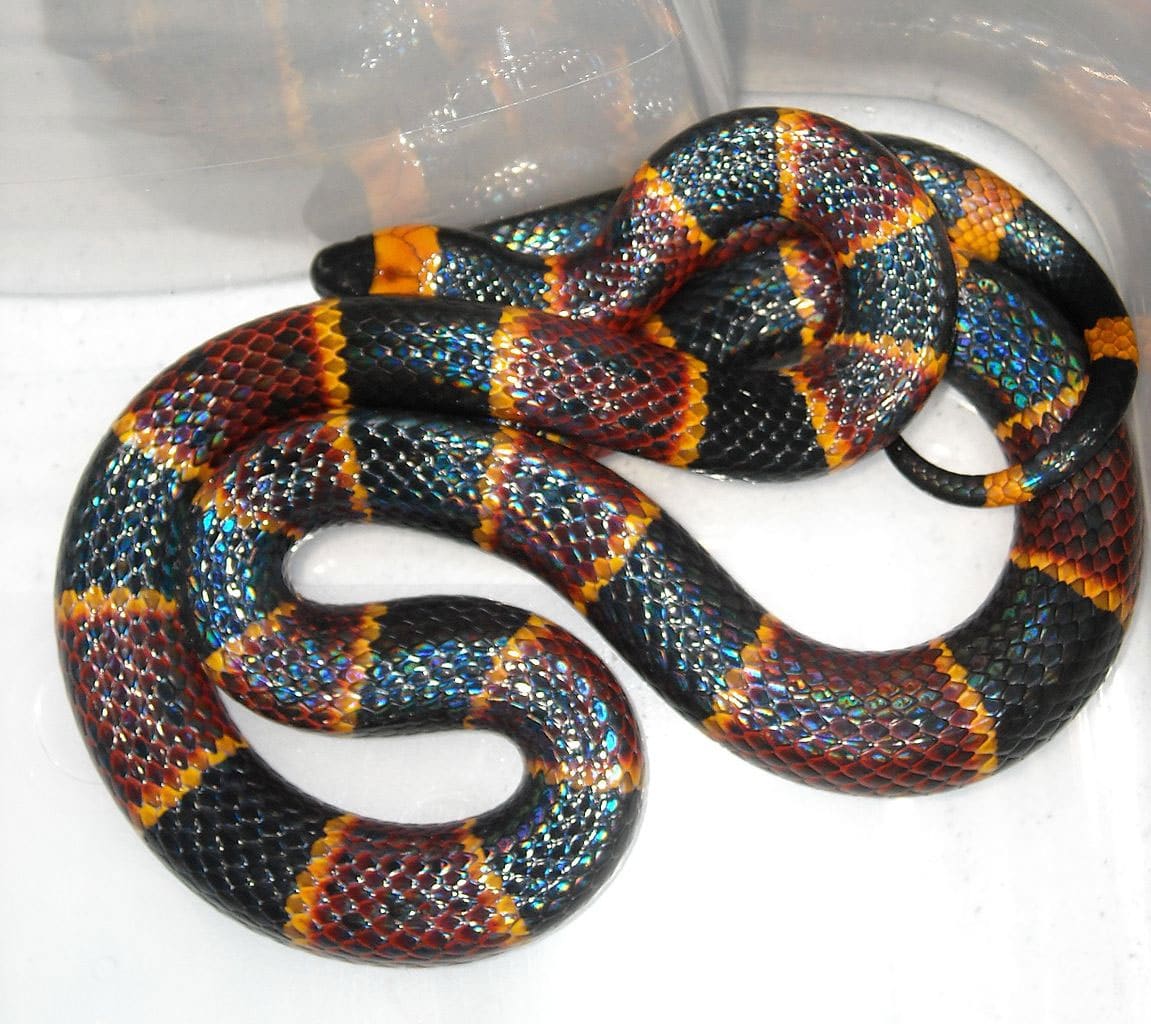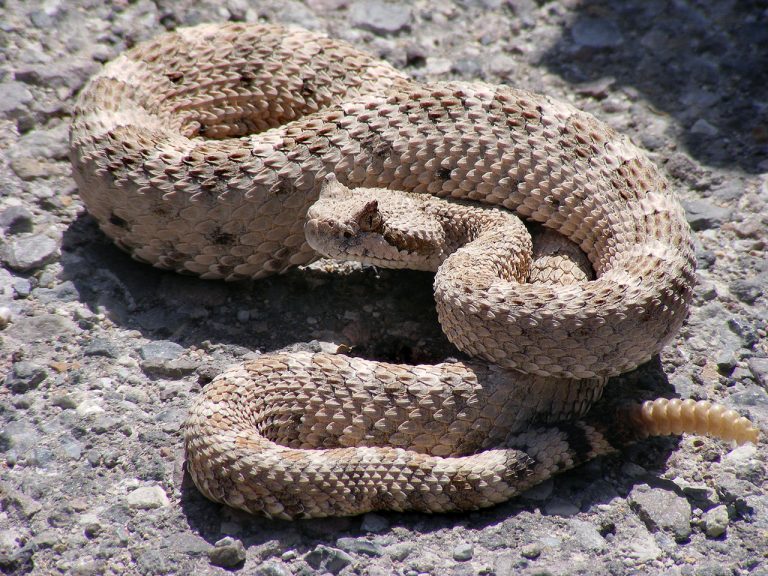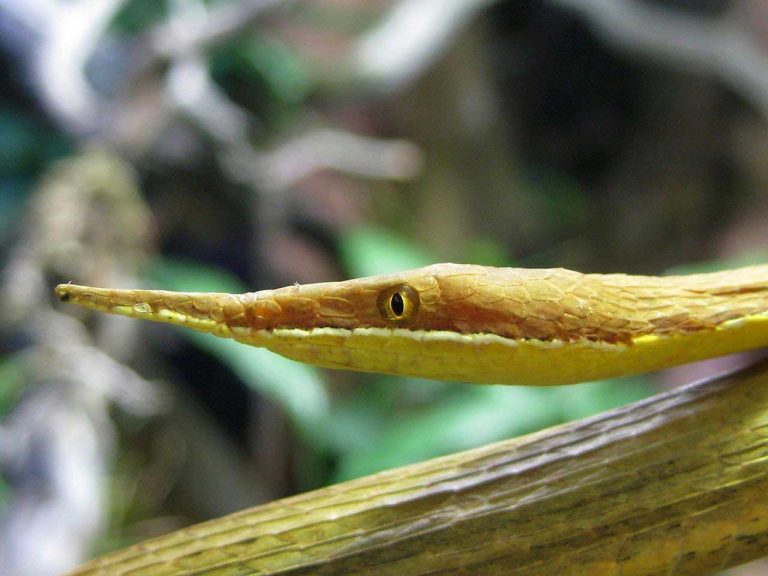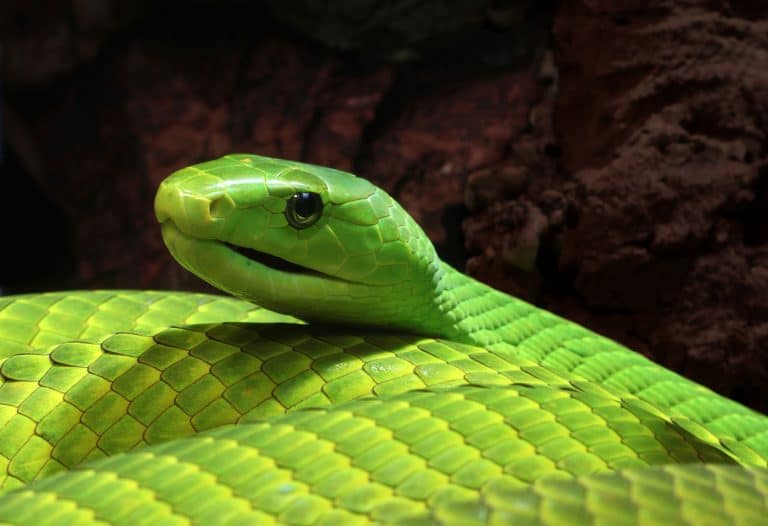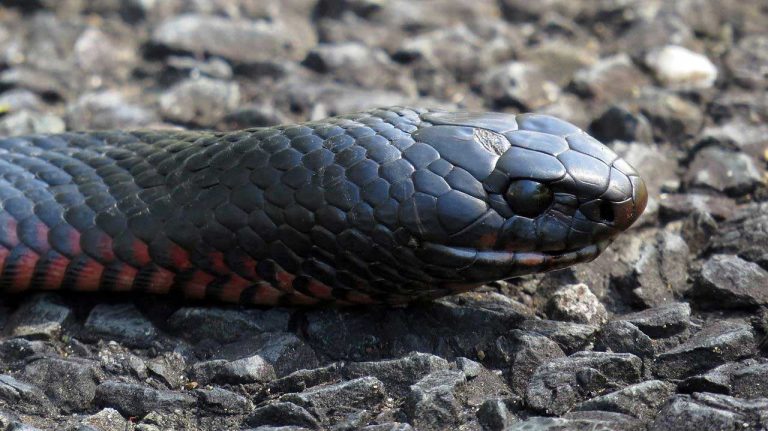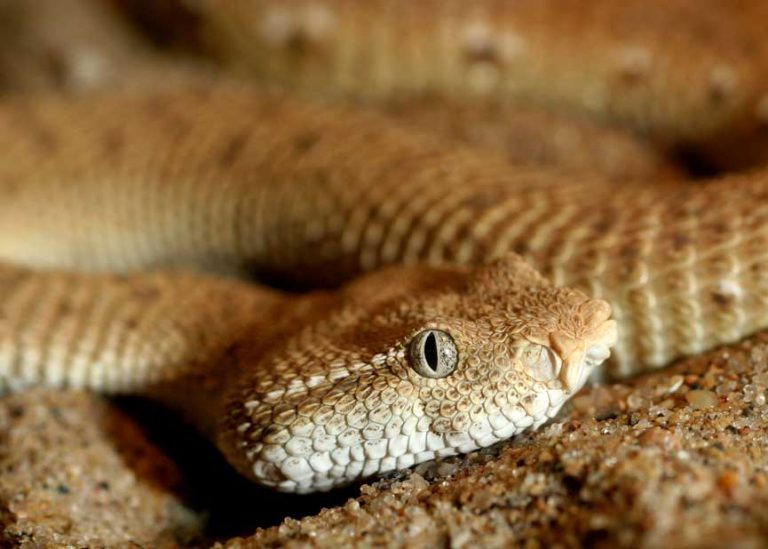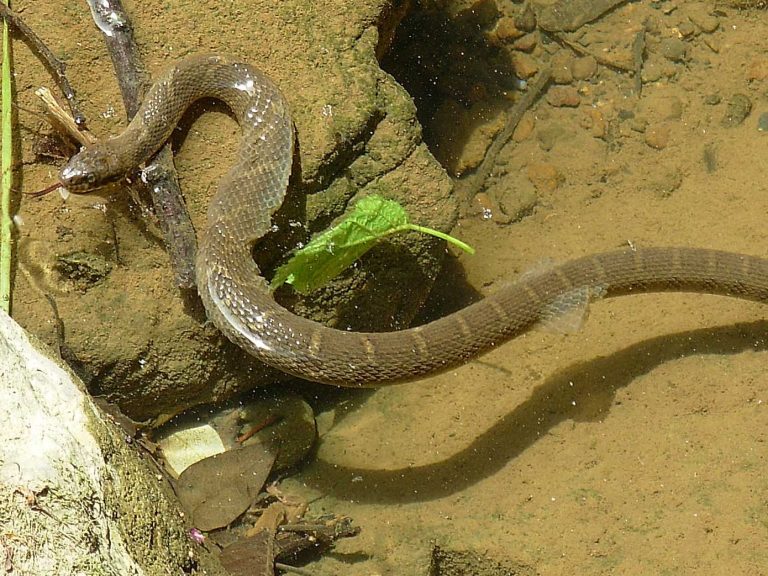Coral Snakes
Scientific Classification
| Kingdom: | Animalia |
| Phylum: | Chordata |
| Subphylum: | Vertebrata |
| Class: | Reptilia |
| Order: | Squamata |
| Suborder: | Serpentes |
| Family: | Elapidae |
These small Coral snakes are brilliantly colored, they are extremely venomous, and we find them in the Americas and in Asia. The venom of these snakes is second strongest when compared to the other snakes (The highly venomous snake is the black mamba), but when compared to the rattlesnakes, they are less hazardous. The reason is, the system by which the coral snake delivers poison is not as effective as their rattling cousins.
The Coral Snakes, natives of the United States are the one and only Elapine (Relating to the family Elapidae) variety of snakes that are of three species. The coral snakes of the United States are distinguished properly by the ancient rhyme red to black, venom lack, red to yellow and kill a fellow,
The dazzling colors of the coral snake are a signal to their predators. When they get aggravated, they conceal their heads within their coiled bodies and hoist their tails – which resembles their heads. Further, they produce a popping noise using their cloaca to scare their predators. The cloaca is fundamentally the sphincter of the snake, Therefore the noise produced is nothing but a fart.
In the Western part of the Hemisphere, we find 50 varieties of them and in the Eastern part some 15 varieties. Coral snakes are near cousins of the poisonous black mamba, sea snake and the cobra.
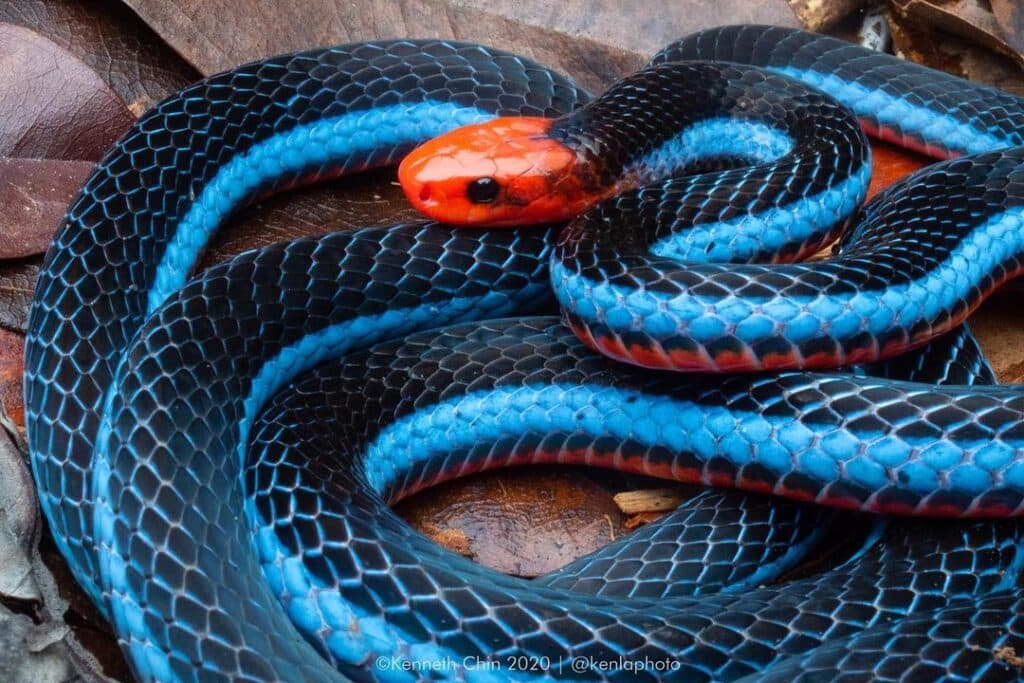
Anatomy
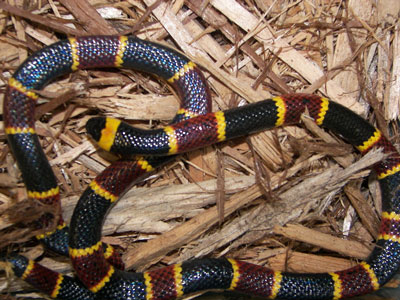
The Coral snakes are tiny and slim built, ranging between 18 and 20 inches in length (45 to 50 cm), certain varieties attain 3 feet (1 meter) in length. Some of them are as slim as a pencil; their heads are bulging with negligible neck, spherical shaped nose and tail resembling the head. It is difficult to differentiate the head from the tail. The pupils of the Coral snakes are spherical and scales polished. A few snakes possess compounds of coral colors. The colors and designs of all the varieties are attractive.
Quite different from the other venomous snakes, the coral snakes are unable to pact their fangs within their mouths. On the contrary, they are always protruding outwards. They have feeble fangs.
Behavior
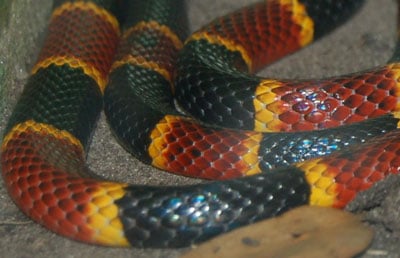
Coral snakes are reclusive and rarely seen. While moving on the ground, they keep their noses protruded and prodding in search of other snakes, the main banquet for a coral snake.
The behavior of these Coral snakes is, to a great extent, diverse, and fossorial as most of them live underground, or beneath the litter of leaves in the ground of the rain forest They are normally not visible on the surface except for breeding or when it rains
Coral snakes possess an inclination for gripping the victim while biting, quite different from vipers whose fangs are retractable and they strike and release at once. Coral snakes are not violent; neither do they prefer biting; they are responsible for less than one percent of the snake bites every year in the United States.
Habitat
The Coral snakes dwell in the jungle places or in forests use up the majority of their time either in piles of leaves or burrows under the ground. They prefer forested and muddy places. They live in brushy woods and marshy lands. In addition, they favor scrubby sand hills in the southeast part of the US.
As a Pet
Breeding
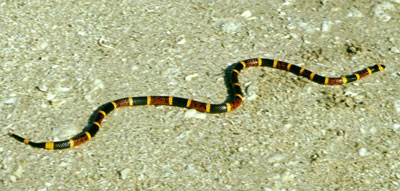
Quite different from the several venomous snakes that deliver live baby snakes, the Coral snakes lays eggs. In North America, we see only this poisonous variety that does so. The Eastern Coral Snake lays 6 or 7 eggs (occasionally 12) during the summer, which hatch in the beginning of fall. Their hatchlings range from 7 to 9 inches in length. Western Coral snakes lay 2 or 3 eggs. Coral snake babies are brilliantly colored at birth, totally poisonous. Their length is 7 inches (17cm).
Coral snakes are understood to show cannibalistic symptoms, which means they consume their forthcoming mate instead of mating with it, as such it is usually a risk in breeding them.
While breeding Coral snakes reduce the temperature to between 50 to 60 degrees for a period of two months and then, slowly raise the temperature to the normal range for a period of two months, giving it sufficient food. Gradually introduce their future mate and OBSERVE THEM VERY KEENLY. In case they tend to mate, leave them on their own for a week. Suppose anyone attempts dine on the other then get ready to interfere and separate them.
After a week keep the pregnant snake in a terrarium and within fifty days relocate her to a less spacious enclosure with sufficient substrate enabling to lay her eggs. Once she lays her eggs, retain the eggs to incubate without causing any disturbance and remove the female from the enclosure.
Housing
The Coral snake enjoys bigger cages. You would do well to use a 20 or 30 gallon long tank or a terrarium of almost similar measurements. In the terrarium, at one end place a big water bowl and, as substrate, place 3 to 4 inches of sphagnum moss in the terrarium. Keep the sphagnum substrate sufficiently damp near the water bowl, decreasing the moisture content towards the other dry end.
Maintenance of this particular species in captivity is very difficult. Also place pieces of flattened bark for them to hide. Provide a substrate consisting of thinly shredded cypress mulch, pelted newsprint or peat moss of several inches thickness for them to burrow. It is advantageous to retain a portion of the substrate scarcely moistened and the remaining portion dry. Keep the terrarium of the Coral snake at low level, but secure, and use an enclosure of about 24
x 48. Keeps a water bowl, with a lower edge, but big enough for the snake to drink from it as well as to drench in it. Keep only clean and fresh water in it.
Food
Coral snakes feed on several tiny snakes with smooth scales and also on lizards. Western coral snakes love eating black-headed or blind snakes. Eastern snakes consume frogs. In nature, Coral snakes feed on different kinds of reptiles, whereas in captivity, they like different varieties of snakes and lizards. Some other coral snakes prefer particular varieties of snakes for their food if you are unable to provide them that, it would be better to let them free.
Eastern Coral Snakes agree with several other species of snakes, including baby racers, hatchling corn snakes, burrowing snakes, green snakes, glass lizards and rarely, skink as food. Only some coral snakes become accustomed to eating pinky mice scented like a snake, skink or lizard. Even though certain owners feed coral snakes kept in captivity with frozen and then thawed ring-necked snakes on a regular basis, several trained owners are of the opinion that ring-necked snakes, alive or dead are harmful, and even fatal to the coral snakes.,
Handling
Handle the Coral snakes only occasionally, as they develop stress soon.

Having discovered a fondness for insects while pursuing her degree in Biology, Randi Jones was quite bugged to know that people usually dismissed these little creatures as “creepy-crawlies”.

